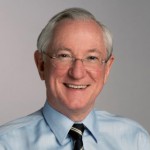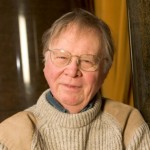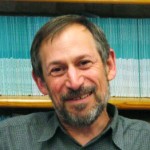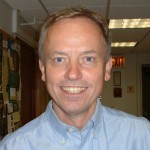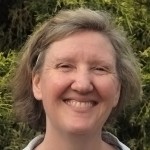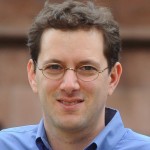Awards and Honors
Our scientists are explorers, innovators and leaders in their fields. Each year, they and their contributions to Earth science are recognized by the international scientific community. Among the many awards bestowed upon our researchers during the last year, the following are particularly noteworthy.
- Sean Solomon
- Wallace Broecker
- Mark Cane
- Göran Ekström
- Paul Olsen
- Terry Plank
- Maureen Raymo
- Adam Sobel
In a ceremony at the White House, Lamont Director Sean Solomon received the nation’s highest honor for scientific achievement, the National Medal of Science. U.S. President Barack Obama praised Solomon for his “creative approaches and outstanding contributions to understanding the internal structure and evolution of the Earth, the Moon, and other terrestrial planets, and for his leadership and inspiration for new generations of scientists.” Solomon was the lead scientist of the NASA MESSENGER mission, which sent the first spacecraft to orbit Mercury and collect details about the planet’s chemistry, geology, interior, atmosphere, magnetosphere, and interaction with the interplanetary medium. The MESSENGER team was also given the Space Pioneer Award from the National Space Society.
The American Philosophical Society elected Wallace Broecker, a pioneer in climate science and the Newberry Professor of Earth and Environmental Sciences at Lamont, to its esteemed membership rolls. The society, founded by Benjamin Franklin in 1743, promotes useful knowledge in the sciences and humanities through excellence in scholarly research, professional meetings, publications, library resources, and community outreach. Broecker was given honorary doctorates during the year from Harvard University, Oxford University, and the University of Waterloo in Canada.
The Oceanographic Society elected Mark Cane, the G. Unger Vetlesen Professor of Earth and Climate Sciences, as a fellow for his contributions to the understanding and prediction of the El Niño-Southern Oscillation and his work on the tropical oceans and their effects on climate and society. Fellows are chosen for their outstanding contributions to the field of oceanography over several years.
Göran Ekström, a seismologist and professor of Earth and Environmental Sciences, received the Beno Gutenberg Medal from the European Geophysical Union for outstanding contributions to seismology. Ekström leads the Global Centroid Moment Tensor Project at Lamont that collects data from large earthquakes worldwide and analyzes their source characteristics. His work includes analyzing unusual seismic activity and using seismic activity to develop computer models of the interior of the Earth.
The 2015 Thomas Jefferson Medal for Outstanding Contributions to Natural Science went to Paul Olsen. Olsen, a paleontologist and Arthur D. Storke Memorial Professor at Lamont, has studied the causes of past mass extinctions, including events over 200 million years ago that led to the rise of the dinosaurs. The medal is awarded by the Virginia Museum of Natural History to a scientist who has made significant scientific contributions in the broad area of natural history.
Terry Plank, a geochemist and Arthur D. Storke Memorial Professor, received an honorary doctorate from Dartmouth College in 2015. Plank’s work focuses on underwater and subaerial volcanism, the formation of magma, and the changes that take place as Earth’s crust is recycled at subduction zones.
The Geological Society of London, the world’s oldest national geological society, elected Maureen Raymo as an Honorary Fellow. One year earlier, she became the first woman to receive the Wollaston Medal, the Society’s most senior award. The Society describes her as “an outstandingly creative scientist who has been setting the agenda in the study of the history of the ocean, and the Earth as a whole. She is a world class palaeoceanographer and one of the foremost and influential figures in the last 30 years during which time she has had a profound impact on Earth system science.” Raymo, a Bruce C. Heezen Lamont Research Professor, also received an honorary doctorate from Lancaster University in Great Britain.
Adam Sobel, an expert in extreme weather and a professor of Earth and Environmental Sciences and Applied Physics and Mathematics, was honored with an Ascent Award from the American Geophysical Union. His book “Storm Surge” also earned him an Atmospheric Science Librarians International Choice Award for providing readers with a detailed, clear understanding of the meteorological basis for Hurricane Sandy and the importance of our response to it. The Lamont Tree Ring Lab’s Rosanne D’Arrigo, Nicole Davi, Robert Wilson, Gregory Wiles, and the late Gordon Jacoby received an honorable mention from Atmospheric Science Librarians International for their book “Dendroclimatic Studies: Tree Growth and Climate Change in Northern Forests.”
